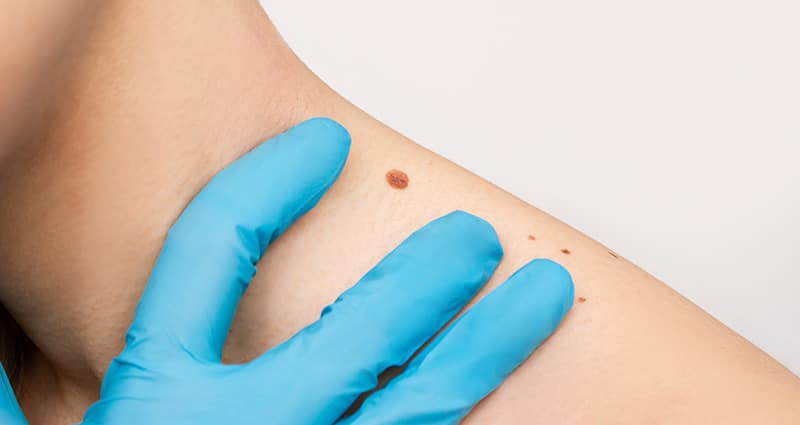Your skin is your body’s first line of defense, and it takes a lot of punishment on your behalf. It’s important to take care of it.
While skin cancer is the most common type of cancer, it can require minimal treatment—as long as it gets noticed and diagnosed early enough.
Because early detection is key, it’s smart to visit a dermatologist for a thorough skin exam once a year or more often if you’re at higher risk such as if you’re fair-haired or light-eyed or if you get lots of exposure to the sun.
Reasons for a Checkup
Besides your annual checkup, here are nine other reasons why you should see a dermatologist.
You have a mole that’s changing size or shape. If you have any kind of skin growth that appears to be changing shape, size, color, thickness or texture, this could be a potential sign of skin cancer. For successful treatment, it should preferably be identified as early as possible.
You have persistent acne. This is the most common skin condition in the United States. Your dermatologist can determine what kind of prescription medication would be most effective for you.
Your skin is dry, itchy and irritated. This could be a sign of eczema, a chronic skin condition that causes uncomfortable inflammation of the skin. Your dermatologist can diagnose it through testing and can find ways to relieve your symptoms.
You have scaly patches on your skin. This could be psoriasis, which is when skin cells form too quickly, piling up on the surface of your skin. Your dermatologist can recommend prescription creams and oral medications.
You’re losing hair. You may have a scalp disorder or an inherited condition. To find out, your dermatologist might do blood tests and examine a tiny sample of scalp tissue. They can recommend laser treatments, surgical procedures or medications.
Your face continually looks red and flushed. This may be the result of a chronic skin condition called rosacea. Women and people with light skin have a higher risk of this. While there’s no cure, your dermatologist can help manage the symptoms with medication or laser therapy.
You have athlete’s foot. Whether it’s actually athlete’s foot or a similar skin infection, your dermatologist can diagnose whether it’s being caused by fungus, yeast, a virus or bacteria.
You have varicose veins. These are swollen, painful veins that usually appear on the legs, which may increase your risk of blood clots. Your dermatologist will recommend medication, support stockings and/or lifestyle changes.
You have an itchy rash from poison ivy. Whether it’s from poison ivy, poison oak or poison sumac, your dermatologist can recommend prescription creams or oral medications.
Preparing for a Dermatologist Visit
Before you go to the dermatologist’s office, you should take the following steps:
Do a self-exam. During monthly checks, you might notice changes to your skin that you should point out.
Skip the makeup. Or at least bring makeup remover to your appointment. This makes it easier for the doctor to examine your face.
Remove nail polish. This enables a thorough examination of fingers, fingernails and nail beds.
Think of questions. If you bring a list of questions and concerns to discuss with your dermatologist, it’s an opportunity to get valuable advice.
More Useful Information About Protecting Your Skin
Get Ready for Spring Activities—And All That Sun, Too




